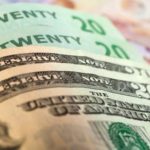The British pound hovered near the weakest level in almost six weeks against the US dollar, after a report showed inflation in the UK rose at the slowest annual rate since October 2009 last month.
GBP/USD touched a daily low at 1.6482 at 07:45 GMT, after which it consolidated to trade little changed at 1.6499 at 10:31 GMT, adding 0.01% for the day. Support was likely to be found at March 24th low, 1.6466, also the pairs weakest since February 12th, while resistance was to be met at March 24th high, 1.6536.
UK consumer prices rose by 1.7% last month from a year earlier, the lowest since October 2009, in line with analysts estimates. Inflation, which stood at 1.9% in January, has slowed from 5.2% in September 2011.
On a monthly basis, consumer prices rose 0.5% in February, in line with analysts projections and following a 0.6% drop in the previous month.
Sterling’s demand continued to be pressured after the minutes of Bank of England’s March meeting on policy revealed last week that policy makers voted unanimously to keep their benchmark interest rate at a record-low 0.5%. On March 19th, after BoE’s minutes were released, the pound fell to a three-month low.
Meanwhile, a report by the US Commerce Department may show today that sales of new homes in the US dropped 4.9% in February, reaching an annualized 445 000 pace, according to the median estimate of experts. A separate report by the US Federal Housing Finance Agency may reveal its house price index rose 0.6% in January, following a 0.8% increase in the prior month. Higher-than-expected readings will certainly heighten the greenback’s appeal.
Demand for the US dollar remained supported after Federal Reserve policy makers trimmed their bond-buying program by another $10 billion to $55 billion per month, last week. Moreover, Federal Reserve Chair Janet Yellen, said that the first increase in borrowing costs should come “around six months” after the end of the stimulus program. The monetary easing program, which tends to devalue the US dollar, is expected to be brought to an end this fall.
The Federal Open Market Committee also revised its forecasts, showing more policy makers predicted the main interest rate, now close to zero, would increase at least to 1% by the end of next year and 2.25% by the end of 2016, higher than previously forecast. The Committee also dropped the unemployment rate threshold for considering when to raise interest rates, making a transition to a wider set of data.
“The biggest focus is whether the U.S. economy will improve to justify the Fed’s outlook,” Shinichiro Kadota, a foreign-exchange strategist at Barclays Plc in Tokyo, cited by Bloomberg. “We expect U.S. data to strengthen and the dollar to rise gradually, especially around the second half of this year.”
Elsewhere, EUR/USD touched a session low at 1.3808 at 09:40 GMT, after which consolidation followed at 1.3812, losing 0.2% for the day. Support was likely to be found at March 24th low, 1.3760, while resistance was to be met at March 24th high, 1.3876.





